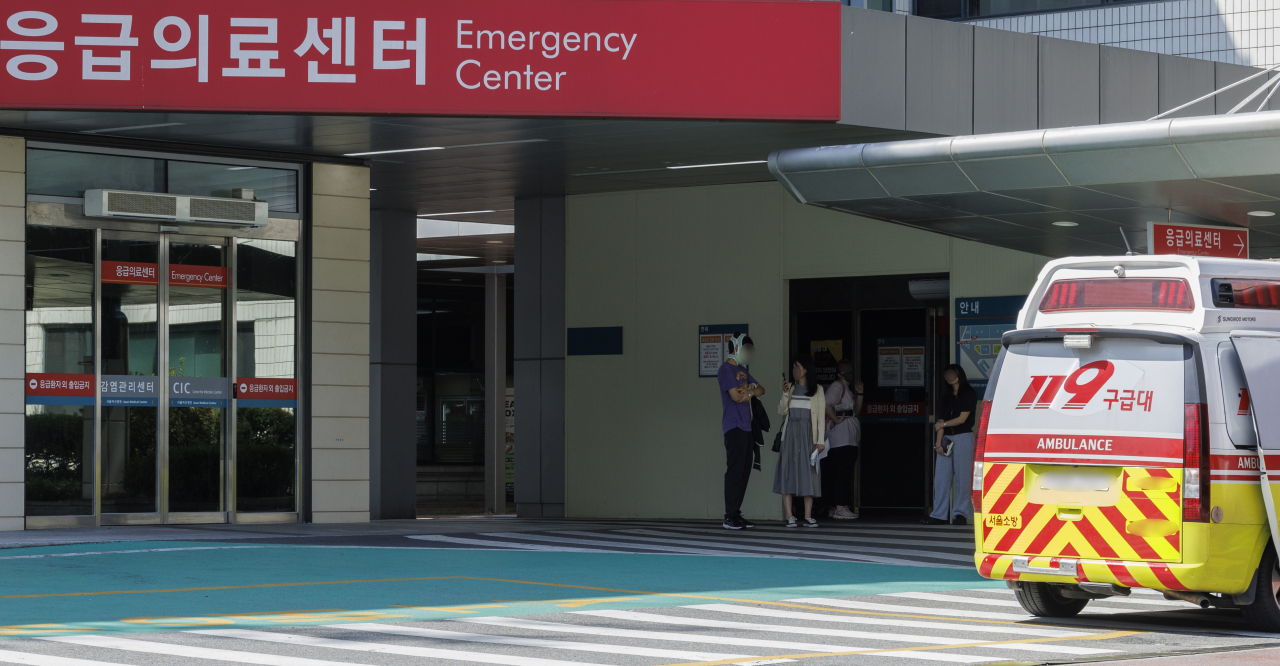 |
Patients wait for treatment at an emergency center in one of Seoul's biggest hospitals on Tuesday. (Yonhap) |
Hospitals in South Korea, recognized among the world's best, are predominantly concentrated in the Seoul metropolitan area, showing a significant disparity in healthcare accessibility and quality between the capital area and the rest.
According to Newsweek's World's Best Specialized Hospitals 2025 rankings, seven South Korean medical institutions have secured spots in the top 100 for cancer treatment or oncology, which is a subspecialty of medicine dedicated to the investigation, diagnosis and treatment of people with cancer or suspected cancer. Among them were the so-called "Big 5" hospitals, such as Samsung Medical Center ranked No. 3, Asan Medical Center at No. 5, Seoul National University Hospital at No. 8, Severance Hospital at No. 23, and Seoul St. Mary's Hospital at No. 37. The National Cancer Center claimed No. 40 while Seoul National University Bundang Hospital sat at No. 57.
With the rankings for cancer treatment extended to the top 300, an additional nine Korean hospitals were included. In total, 16 South Korean hospitals made the top 300, with Chonnam National University Hwasun Hospital being the only one located outside the Seoul metropolitan area.
The situation in South Korea was not much different in other clinical areas.
In separate rankings of each clinical area, four Korean hospitals made the rank in cardiac surgery, and nine in orthopedics, digestive, and respiratory. Five hospitals in neurosurgery and 10 in urology made the list. Three hospitals in obstetrics and gynecology made their separate top 100 lists.
All of the hospitals on the list are located in the Seoul metropolitan area.
Underscoring the stark contrast, the imbalance in treatment capability has driven cancer patients from rural regions to seek care at major hospitals in Seoul, despite the inconvenience of long-distance travel by express bus or KTX.
In order to reduce the gap in medical capacity between metropolitan and non-metropolitan areas, voices calling for the attraction and settlement of highly qualified medical staff to local medical institutions have increased.
In response, the Korean government has announced a plan to foster regional medical care by increasing the number of medical professors at national universities in regional centers by 1,000 over three years, providing advanced equipment for experiments and labs, and intensively supporting national hospitals to become essential regional medical centers.
To encourage doctors to work in rural areas, the government plans to introduce a new system for so-called contract doctors from next year that will provide a monthly allowance of 4 million won ($3,000) in exchange for working long-term at medical institutions in regional areas.
In July, the opposition political party also proposed a bill to establish and operate public health medical universities and graduate schools, requiring students to perform 10 years of compulsory service at medical institutions in medically vulnerable areas after graduation.







![[Today’s K-pop] Blackpink’s Jennie, Lisa invited to Coachella as solo acts](http://res.heraldm.com/phpwas/restmb_idxmake.php?idx=644&simg=/content/image/2024/11/21/20241121050099_0.jpg)